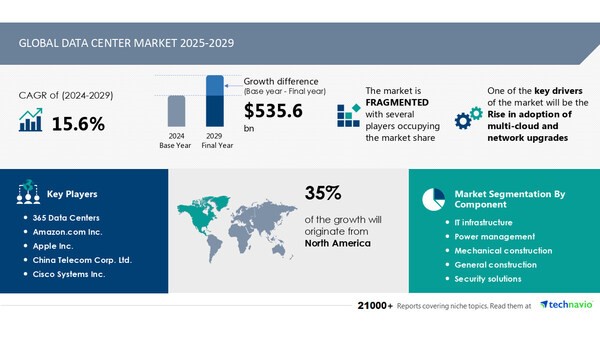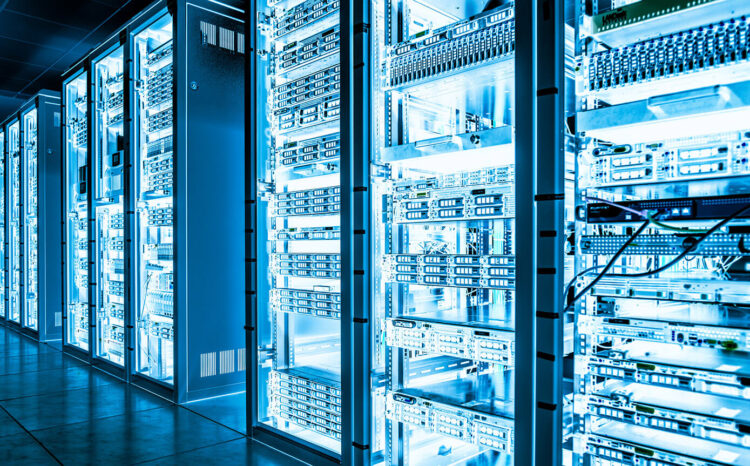Technavio predicts the global data centre market will grow by USD 535.6 billion from 2025 to 2029 at a CAGR of 15.6%.
Technavio’s latest market research report, Global Data Centre Market 2025-2029, lists trends such as artificial intelligence (AI), machine learning (ML), IoT, and cloud computing, which are driving the need for more data processing power and real-time data analysis.

AI and data centres
AI, a powerful tool in the arsenal of data centres, is harnessed to boost energy efficiency and fine-tune server, power, and cooling system performance, paving the way for a more sustainable and high-performing future.
Data centre service providers are harnessing the full potential of AI in their automation software, significantly reducing human intervention and promoting energy-efficient operations, thereby ensuring the smooth and efficient functioning of the systems.
The technology also facilitates effective cooling control, adjusting cooling processes and maximising power usage.
Market challenges
AI and ML technologies in data centres demand massive computing power, driving the need for advanced IT infrastructure. Meanwhile, the rise of Internet of Things (IoT) devices and cloud computing has significantly increased data volumes, making scalability and flexibility essential for modern data centres.
As digitalisation accelerates, real-time processing and cost efficiency have become priorities, yet latency issues persist—especially with the growing adoption of IoT, autonomous vehicles, and other data-intensive applications.
Macroeconomic factors influence data centre investments, including exchange rates and business leadership decisions.
While cloud technology, colocation, and data centre systems provide solutions for B2B enterprises, challenges remain, particularly in hardware costs, data security, and regulatory compliance.
Key concerns persist, including data security, backup reliability, and network bandwidth.
The widespread adoption of cloud services and IoT solutions has also heightened the risk of cyberattacks. Given these risks, organisations must urgently prioritise cybersecurity measures to protect against evolving threats.





